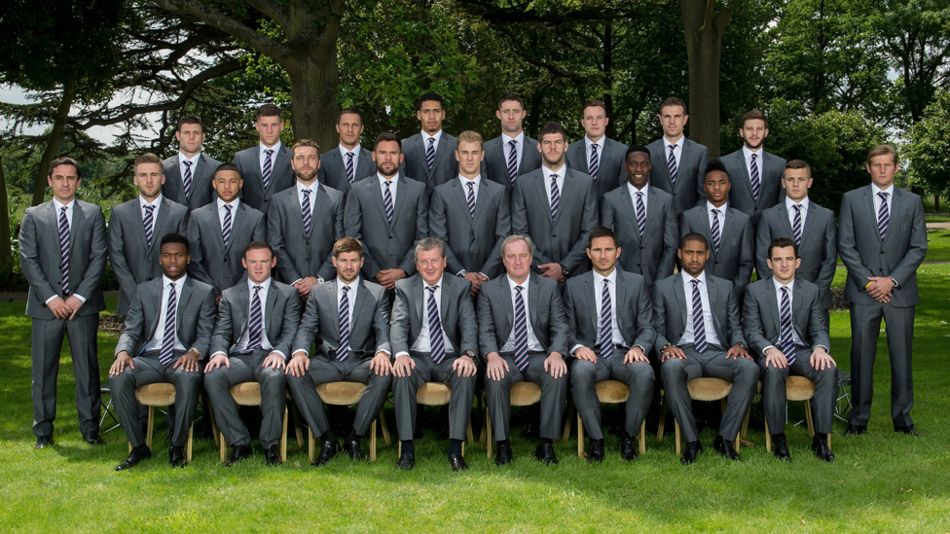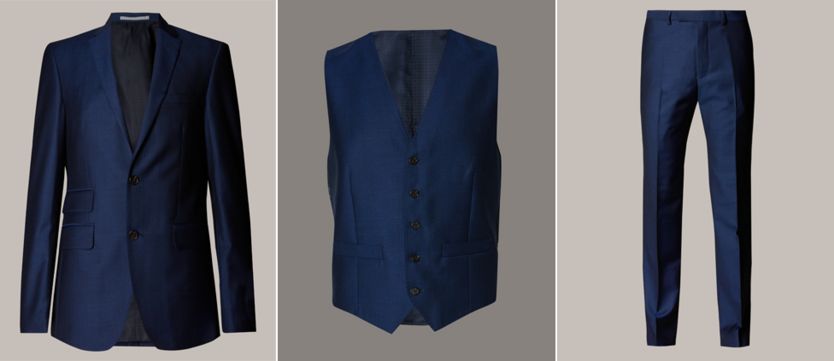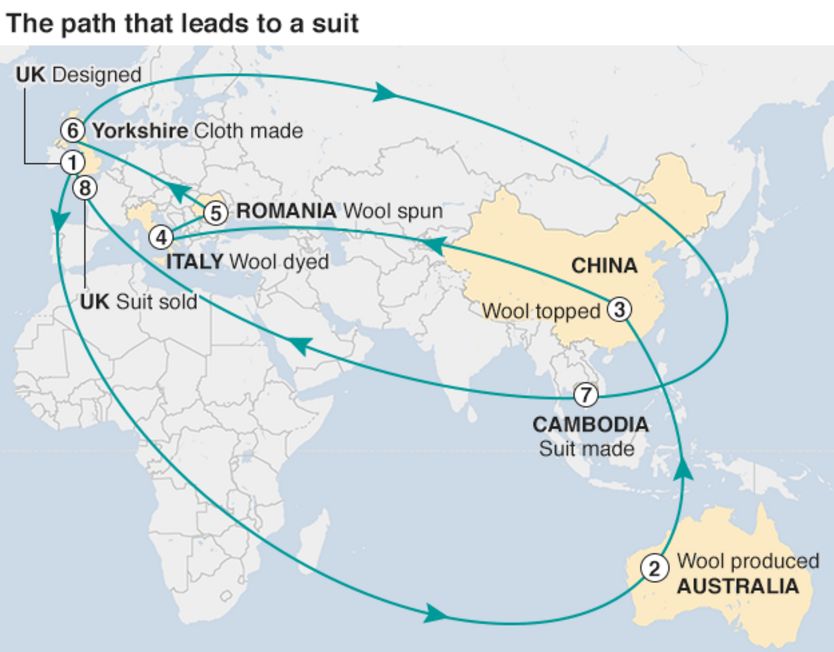By Robert Spencer
BBC News Magazine
 |
| Here's one we wore earlier - the 2014 England World Cup squad in their team suits |
The suit that the England football team will wear at formal occasions at Euro 2016 is about to be unveiled. But how English is this England suit?
If England do well in France this year, Marks and Spencer will be hoping to shift plenty of suits off the back of it. The retailer has been the official tailor to the England team for nine years, and nearly sold out of its England team suits during the 2014 World Cup.
M&S says the new suit will be "comfortable to wear in the warmer summer temperatures". That's perhaps not surprising as it's made in Cambodia.
But for those football fans who are patriotic about their tailoring there is good news in that the cloth is "100% British". It's made at Alfred Brown worsted mills, a century-old family business in Bramley in Leeds.
 |
| The 2016 England suit |
"We've done the fabric for the FA suit in conjunction with Marks and Spencer for quite a number of years now, and it's an association that we're very proud of," says joint managing director Ian Brown.
The suits are also designed in the UK, by M&S's in-house team. "British cloth means it is woven, dyed and finished in the UK," says a spokesperson. "We have always supported British fabrics, and already use more British fabric than any other retailer in the UK."
But the path of the raw materials and the finished cloth is a classic illustration of how the clothing industry has changed in the UK.
The wool that makes up Alfred Brown's cloth for M&S comes from Australia. A typical journey might see it then on its way to China  for the first bit of processing (although sometimes that processing can happen in Australia), then on to Italy to be dyed, then Romania (or Poland) to be spun into yarn.
for the first bit of processing (although sometimes that processing can happen in Australia), then on to Italy to be dyed, then Romania (or Poland) to be spun into yarn.
 for the first bit of processing (although sometimes that processing can happen in Australia), then on to Italy to be dyed, then Romania (or Poland) to be spun into yarn.
for the first bit of processing (although sometimes that processing can happen in Australia), then on to Italy to be dyed, then Romania (or Poland) to be spun into yarn.
Then it is bought and comes to Yorkshire to be woven into cloth. Then it's off to Cambodia to be made into suits, and back to the UK to be sold. (That's for the warp yarn that goes up and down in the finished cloth - for the weft yarn, which goes side to side, dying typically happens in the UK.)
Alfred Brown's choice of Australian wool is typical for clothmakers. New Zealand and Australian wool has long been thought to be much better than British wool for smooth suit fabric (although some have toyed with the idea of giving the domestic varieties a try).
It's not where the wool comes from, the important thing is where the cloth is made, says Jimmy Chea, of Huddersfield Cloth. The key ingredient is wool from merino sheep, usually found in Australia and New Zealand, but the way it's then turned into cloth changes everything. "If you're talking about fabric, it's where it's woven. Because it's the weaving and the finishing that gives it the unique characteristics, so with the same yarn woven in Italy and woven here but finished in different waters and different countries you'll get two very different cloths."
British wool tends to be too scratchy in quality to make fabric for suits and is more often used in carpets, suggests Kate Hills, founder of the internet retailer Make It British. "All credit to M&S for using British cloth, but you couldn't call the England team's suit 100% British-made."
And that might be an issue for the patriotic suit buyer - why is it made in Cambodia?
"Shouting about the cloth being 100% British could lead to complaints from customers when they find out [the suit itself] has actually been made elsewhere," says Hills. "And this has been made in Cambodia."
But it's easy to argue that cost makes this production choice inevitable. The England suit is on sale for £199 and suits in that price region are rarely made in the UK. Manufacture in China is typical although there's also competition from other East Asian countries and Bangladesh. Closer to the UK, North Africa, Eastern Europe and Turkey all have considerable clothes manufacturing and make many "luxury" suits.
Most suits made in the UK retail for at least £800, Hills says. In the UK labour costs are much higher and manufacturers "don't want to undermine their reputation for Savile Row quality".
The UK's overall manufacturing of clothes has declined dramatically. The Office for National Statistics released figures recently showing the UK imported over £18bn of clothes in a year, but only exported £5bn worth.
Hills, who used to work as a designer for Burberry and a buyer for M&S, says the latter was among the companies most resistant to moving clothes manufacturing overseas but market forces in the early 2000s dictated it.
Other companies had for some years been moving even their more expensive clothing to China, where labour costs were far lower. At the same time, transport costs were falling. Thus it can be cheaper to transport goods across three continents rather than produce it wholly in the UK.
Even away from suits, the brands that make all of their clothes in the UK - like knitwear brand John Smedley in Derbyshire, for instance - tend to be luxury. There are many mainstream brands that might make a small proportion of items in the UK.
"We do offer British made suiting within our Best of British collection," M&S points out. And they argue that the capacity now simply doesn't exist in the UK to make all the suits.
But is there an environmental cost to all this wool going around the world? "The environmental impact of clothing is not just measured in distance travelled, but the material used and manufacturing processes," suggests Catherine Early, deputy editor of The Environmentalist.
Cambodia has long been criticised for poor human rights, but M&S have always argued that they maintain high ethical standards in all their production.
The production model for M&S's suits is increasingly typical. Inside jackets and trousers you'll see "woven in England" or "woven in Scotland" but the garment is actually made elsewhere.
And for every fanatically patriotic buyer, there will be one who looks at something designed in the UK and using Yorkshire cloth and is happy.
Footballers in suits

No comments:
Post a Comment